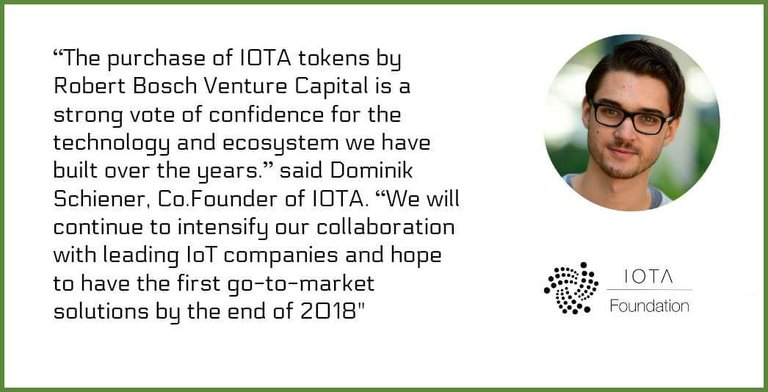Leigh Cuen
Posted with permission from International Business Times
Over the past two months IOTA tokens suddenly became one of the most-talked about cryptocurrencies of 2017. CoinMarketCap estimates IOTA now has a market cap of more than $10 billion, which outranks more popular tokens such as monero, zcash and Neo in terms of global transactions and speculative value. Robert Bosch Venture Capital recently became the first VC firm to invest in IOTA.
IOTA is still considered an extremely young cryptocurrency in terms of technical development and adoption. Its white paper was first published in 2015. Then a group of volunteer developers ran a token generation event (before initial coin offerings became a hip trend) to raise around $500,000 and establish the nonprofit IOTA foundation in Germany. IOTA offers a radically different approach to cryptocurrency, one without miners or a traditional blockchain network. This solves two of bitcoin’s biggest pain points: Slow processing and high transaction fees.
Even beyond powering blockchain systems, miners have a very important role in a currency's lifecycle: Miners create new tokens. Dollars are printed and tokens are usually mined with fancy software. New tokens compensate miners for lending their computing power to verify data. It's like a food chain. How could a cryptocurrency work without this foundation?

“In IOTA, validation of others’ transactions is an intrinsic property of sending your own transaction,” IOTA co-founder David Sønstebø told International Business Times. “This means we get rid of miners entirely and instead have a completely democratized and decentralized network where everyone is an equal validator and user, thus no fee.”
IOTA’s creators already made lots of tokens, 2,779,530,283,277,761 tokens to be precise. So there’s no need for miners to make more of them. Every user pitches in a little bit of computing power to making sure data is correct and complete. Theoretically, there’s no need to line up and wait for a miner, who then deserves compensation for such heavy-lifting.
“The more users there are on the network, the more validation occurs, which is the number one bottleneck for blockchain architecture,” Sønstebø said. “Right now, during the bootstrap phase of the network, we have a coordinator which helps the network to grow and protect it against certain attacks.”
However, fast and free micropayments required a trade-off when it came to decentralization and security features. The Massachusetts Institute of Technology Media Lab pointed out several serious flaws in this new cryptocurrency network. They took issue with the claim that IOTA doesn’t have any fees. “Most people wouldn’t be interested in buying a refrigerator operated by a hand crank, even if the advertisement said ‘No electricity required!’” the MIT report said.
Hi! I am a robot. I just upvoted you! I found similar content that readers might be interested in:
https://bitcoinsaus.com.au/iota-cryptocurrency-predictions-2018/